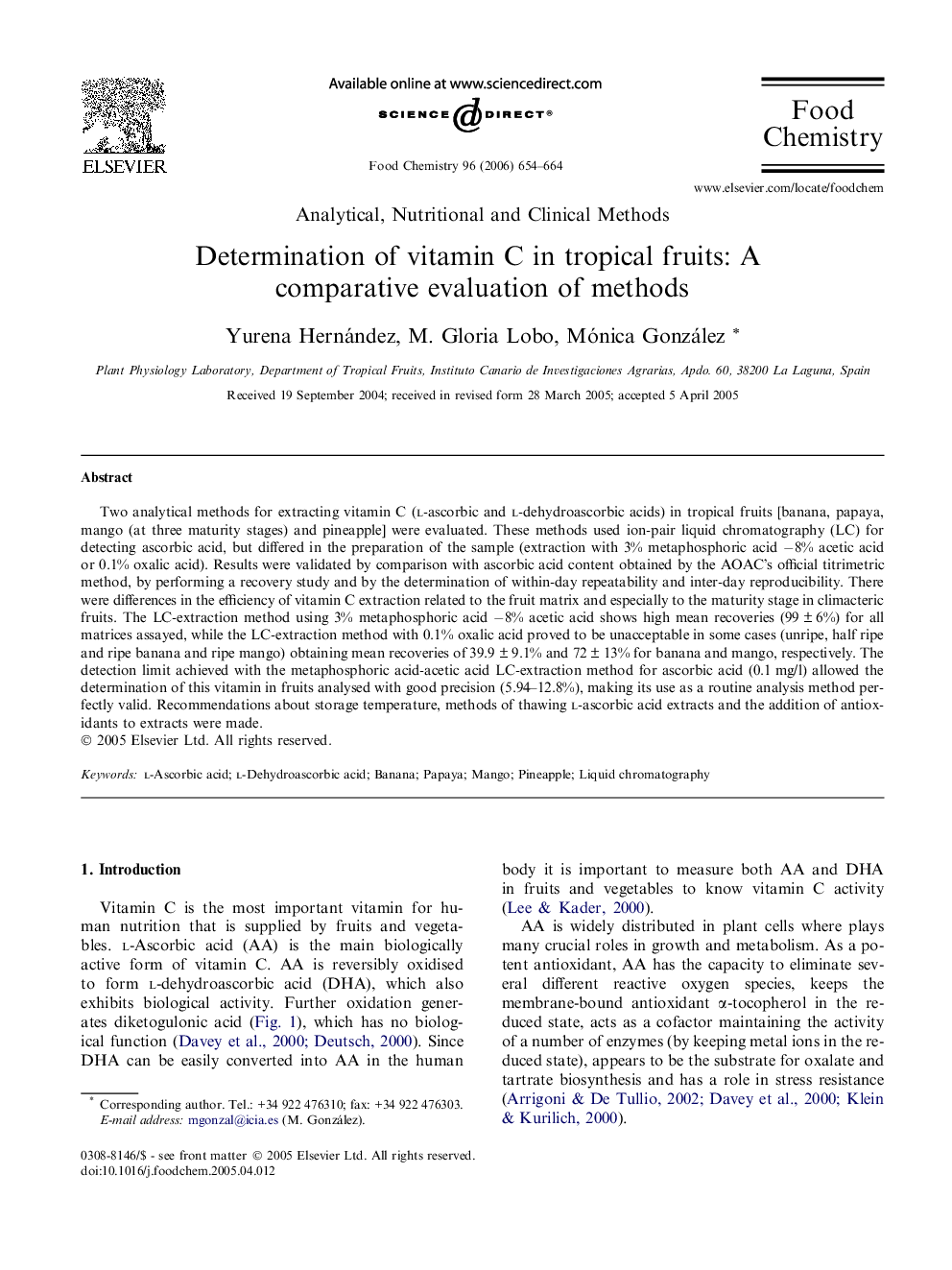| Article ID | Journal | Published Year | Pages | File Type |
|---|---|---|---|---|
| 1191532 | Food Chemistry | 2006 | 11 Pages |
Two analytical methods for extracting vitamin C (l-ascorbic and l-dehydroascorbic acids) in tropical fruits [banana, papaya, mango (at three maturity stages) and pineapple] were evaluated. These methods used ion-pair liquid chromatography (LC) for detecting ascorbic acid, but differed in the preparation of the sample (extraction with 3% metaphosphoric acid −8% acetic acid or 0.1% oxalic acid). Results were validated by comparison with ascorbic acid content obtained by the AOAC’s official titrimetric method, by performing a recovery study and by the determination of within-day repeatability and inter-day reproducibility. There were differences in the efficiency of vitamin C extraction related to the fruit matrix and especially to the maturity stage in climacteric fruits. The LC-extraction method using 3% metaphosphoric acid −8% acetic acid shows high mean recoveries (99 ± 6%) for all matrices assayed, while the LC-extraction method with 0.1% oxalic acid proved to be unacceptable in some cases (unripe, half ripe and ripe banana and ripe mango) obtaining mean recoveries of 39.9 ± 9.1% and 72 ± 13% for banana and mango, respectively. The detection limit achieved with the metaphosphoric acid-acetic acid LC-extraction method for ascorbic acid (0.1 mg/l) allowed the determination of this vitamin in fruits analysed with good precision (5.94–12.8%), making its use as a routine analysis method perfectly valid. Recommendations about storage temperature, methods of thawing l-ascorbic acid extracts and the addition of antioxidants to extracts were made.
